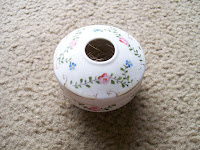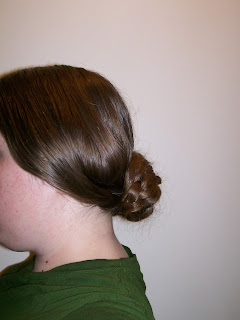"After a few experiments, a lady may very easily decide what mode of dressing her hair, and what head-dress, renders her face most attractive."
So, how were women wearing their hair in 1855?
| The Empress Eugénie Surrounded by her Ladies in Waiting (1855) by F. X. Winterhalter |
| The Last of England (1855) by Ford M. Brown |
| Harvester with Sickle, by J.-B.-C. Corot, c. 1850-5 |
 |
| Magazine illustration, 1855 |
An 1854 article in Arthur's Home Magazine notes that:
"For ordinary wear, plain bands on each side the temple, drawn out wide where the size and shape of the head admit of it, are principally seen. The back hair is formed into a French twist flat to the head, around which the rest is disposed in a close circle, either twisted, roped or braided, leaving the smooth twist displayed in the centre."Incidentally, this "wide over the ears" look persists into the later '50s:
 |
| From "How to Arrange the Hair", 1857 |
 |
| Starting point: back hair braided and coiled at back of the head, side hair loose. |
 |
| Hello, rats! |
 |
| It is not at all weird that I store hair on my dresser. |
Further fiddling occurs. Once I'm satisfied with the look, I pin the twisted portion of the hair to the existing back bun. I keep twisting the remaining hair and coiling it around, tucking in the ends once it's complete.
Now, the tricky bit is to repeat the process on the other side, trying to get the rats in the same position, so the hair style is symmetrical.
Once all my hair is pinned in place, I get a little pomade on my hands and rub it in over the top. This help give a smooth, tidy period appearance--note the sheen in the period images. I used to apply the pomade before styling, but it made my hair too slippery and the pins tended to slide out.
If desired, an invisible net can be added to help contain fly-aways.
Finally, the comb or other decorations are added.






Nicely done! I've used that basic style quite a bit, but still need to make myself some rats. :)
ReplyDeleteI avoided rats for a long time because I couldn't get the outer hair smoothed over them nicely. They really add volume.
ReplyDelete